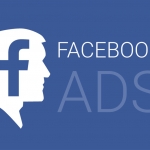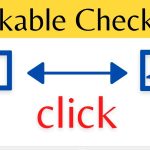It is not enough to create an e-commerce so that it can start selling on its own, but it is necessary for it to flow into a traffic of users potentially interested in buying. Therefore, we need to acquire different traffic resources and Facebook strategies for e-commerce is best source to get both popularity and sales in a short time.
We can acquire traffic from different sources …
- Search engine optimization (SEO)
- Paid search (ex. Google Shopping)
- Social network (Facebook, Instagram)
- Display advertising on other websites
If our brand is already known, e-commerce already has a history and the articles are already quite sought after, exploiting all these sources in synergy with each other would be a very tempting opportunity that would be a shame not to grasp.
Otherwise, the best tool to start with might just be the Facebook strategies for e-commerce and this is what we will focus on in this article.
1) The role of Facebook in e-commerce
Facebook is a very powerful advertising platform for many reasons, but also because it is full-funnel, meaning it can work optimally both in the contact phase and initial knowledge with the Brand, as well as in the final conversion phase click > purchase (And of course in all intermediate steps).
Facebook can therefore show ads to a target that does not know the Brand, leading it to understand its positioning and its value. It can also stimulate the same target on what are the benefits of its products or services and the problems they solve.
The user, already persuaded, will in most cases be able to take time to think about it and get better information and one day decide to complete the purchase, perhaps after a Google search for the product or even for the Brand itself. Although he never clicked on the ad, but only saw it.
In other cases, the user can click on the ad and complete the purchase directly, immediately or after a few days / week.
A person can land on e-commerce even from a search engine or banner display, not complete the purchase immediately, but only after having seen Facebook’s dynamic re-targeting ads several times, i.e. those that show exactly the product that has seen or added to the cart.
Purchase paths can be different, sometimes strange and twisted, but the Facebook strategies for e-commerce often has a significant impact on performance.
2) Trust in the Brand
How important is trust in the Brand for an e-commerce? Let’s say that today it is so. A user takes a little time to learn about a product through our advertising, take an interest in it until he wants to buy it (again thanks to our advertising), and in the end buy it from Amazon, maybe even paying more, simply because he trusts most to buy it there.
In other words, it can happen that Amazon sells a product for free thanks to advertising money invested by us. What injustice, isn’t it?
This is why it is important not only to give our brand a differentiating edge, bringing a unique value on the market, but also to work a lot on the user’s trust through the presence on social media, showing that they can guarantee an excellent service of assistance, return, secure payments and reviews that bear witness to the positive experience of other users.
Implement Facebook strategies for e-commerce is a great tool to work in this part of the funnel, because it can reach a very precise target but also a vast one, to follow it and educate it over time.
3) Dynamic re-targeting
When we approach a new e-commerce project, we immediately examine the possibility of immediately starting dynamic re-targeting campaigns.
If the website already has good SEO traffic (search engines) or coming from other advertising campaigns, immediately taking advantage of Facebook with personalized ads can be the first method to be adopted to immediately increase sales.
This type of campaign shows personalized ads for each individual user, depending on whether it has …
- Certain products displayed or added to the cart
- Purchased similar and complementary products (cross-selling)
- Purchased similar products of lower quality or quantity (up-selling)
The first case is the simplest to understand. I am interested in a specific product, and this pursues me throughout the web until I have bought it (or after spending a certain amount of time).
In the second case, however, I purchased a product A, but product B is complementary, so I am offered an ad hoc announcement. For example: I bought a laptop and now I am offered a bag to contain it. This is cross-selling.
In the third case, product B is qualitatively more important than product A. For example: I buy a basic level training course and then I am offered a new course on the same subject but at an advanced level. This is up-selling.
However, dynamic re-targeting is limited, because it is an activity that is performed only on users who have already performed actions in our e-commerce. If we worked alone with it, we would be like a squirrel who always turns in his wheel without ever moving from there.
4) Find new prospects
Finding new prospects means getting people on our website who have never been there before. How can we attract them using Facebook?
Here are 3 tools and let’s see how to use them in Facebook strategies for e-commerce…
Interests
Especially when we don’t have a great historian in e-commerce, interests can be a great way to start.
Of course, we will have to analyze and know our target well and then be able to use the Audience Insights tool to correctly select keywords.
Once the right interests have been identified, we need to understand how many people we can potentially reach and what budgets we have available to invest. If the public is too large compared to the budget, you can think of intersecting the interests in order to reach our target even more precisely, optimizing the distribution of the ad better.
The opposite case, that is, if the public is too small compared to the budget, you can consider selecting the expansion option.
In this case, Facebook will identify, during algorithmic optimization, new suitable interests and people similar to those who have already converted.
Lookalike
Be very careful with this audience. Normally it is a very effective type of audience because it identifies people similar to our customers or visitors to the website; however we must always make an assessment on the homogeneity of the public of origin.
If we start from a customer database, we must be sure that there are no very different target profiles within it. If among our customers, there are both housewives and plumbers and maybe even art lovers, because our e-commerce contains more product categories or the same product can be used by different categories of users, the lookalike based on them cannot be very precise.
In this case, you can think of creating a personalized audience based on a specific target, perhaps using visits to specific product sheets or categories that can only be visited by that specific target profile that we want to reach.
Having done this, the public can be a great way to scale up advertising campaigns, always reaching new users potentially interested through our Facebook strategies for e-commercee.
Open audience
By “open public” we mean a campaign realized without particular target settings, if not the geographical and demographic ones that frame our target, but without interests or lookalike.
When can we do this? Certainly not at the beginning, but after our advertising account, over time, has accumulated an important historian, for which it has understood well what our target audience is, a method to further scale the campaigns can be to no longer use target settings, but let the Facebook algorithm do the trick.
In this way, we will have a much wider potential audience to reach.
5) Educate users (Classic Retargeting)
Between the initial acquisition phase and the final sales phase, there is an intermediate phase in which we can stimulate the emotions of users by showing interesting and pertinent contents with our e-commerce.
Not only that: we can also use this content for our customer database, that is those who have purchased from our website, because it is much simpler than a person who has already bought from us can go back to doing it, compared to a new user.
Sales were 35 times the advertising cost for the public of customers already acquired and 23 times the same for the website visitors.
These contents can show what can be done with our products, or what are their most interesting peculiarities or the most important problems they can solve.
How do we select the contents? One method may be to use posts that at the organic level on the page have already received more feedback from our fans. Therefore, we are going to amplify their reach by sponsoring them to those who follow us, those who have already visited the website and who is already our client, in a classic Retargeting strategy that invites users to always return to our website to buy.






